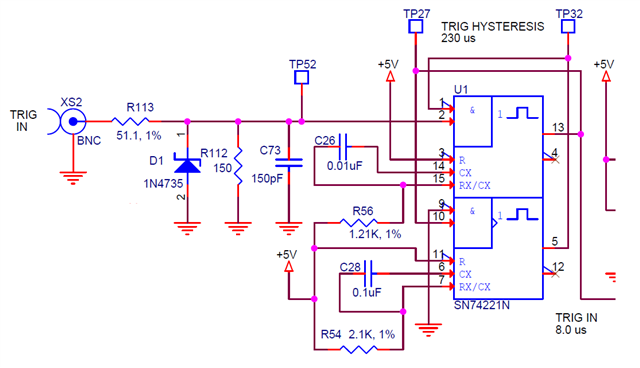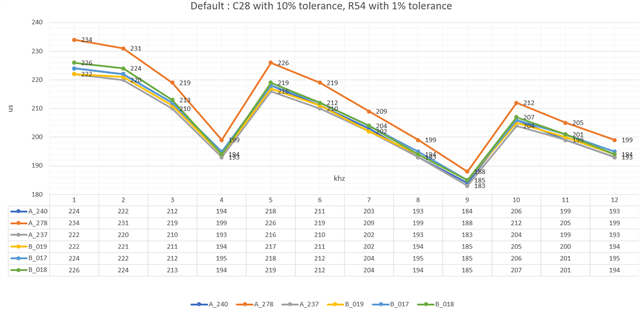Other Parts Discussed in Thread: CD74HCT221, , SN7400, SN74LV221A, SN74LVC1G123
Hi,
With reference to the datasheet link in TI : timing is purely based on external components.
Once fired, the outputs are independent of further transitions of the A and B inputs and are a function of the timing components, or the output pulses can be terminated by the overriding clear.
https://www.ti.com/product/SN74221/part-details/SN74221N?keyMatch=SN74221
In the past there was similar part discussion in the forum, following link for reference: overall we thought the timing variation is due to the external component tolerances.

| ln(2) | R56(1%) | C26(2%) | min | typical | max | |
| TP27 | 0.693147181 | 1210 | 1.00E-08 | 8.14E-06 | 8.39E-06 | 8.64E-06 |
| ln(2) | R54(1%) | C28(10%) | min | typical | max | |
| TP32 | 0.693147181 | 3320 | 1.00E-07 | 2.05E-04 | 2.30E-04 | 2.56E-04 |
What unclear is, the first multivibrator output at TP27 is very consistent and observed around 8us.
Where as second multivibrator output at TP32 does not match with theoritical calculation range and the timing varies as we vary the trigger frequency?
Based on previous conversations, I did try with better cap tolerance 1% : still there is no change in the output response.
| ln(2) | R54(1%) | C28(1%) | min | typical | max | |
| TP32 | 0.693147181 | 3320 | 1.00E-07 | 2.28E-04 | 2.30E-04 | 2.33E-04 |
Herewith I did try to check with 6 different boards, where the output response is consistent and again the timing does vary with trigger frequency.
pls note : here is till 4Khz (230us timing), i just tried to capture timings later to 4khz just for reference only.
Following response is same with 10% or 1% cap at C28 ....




